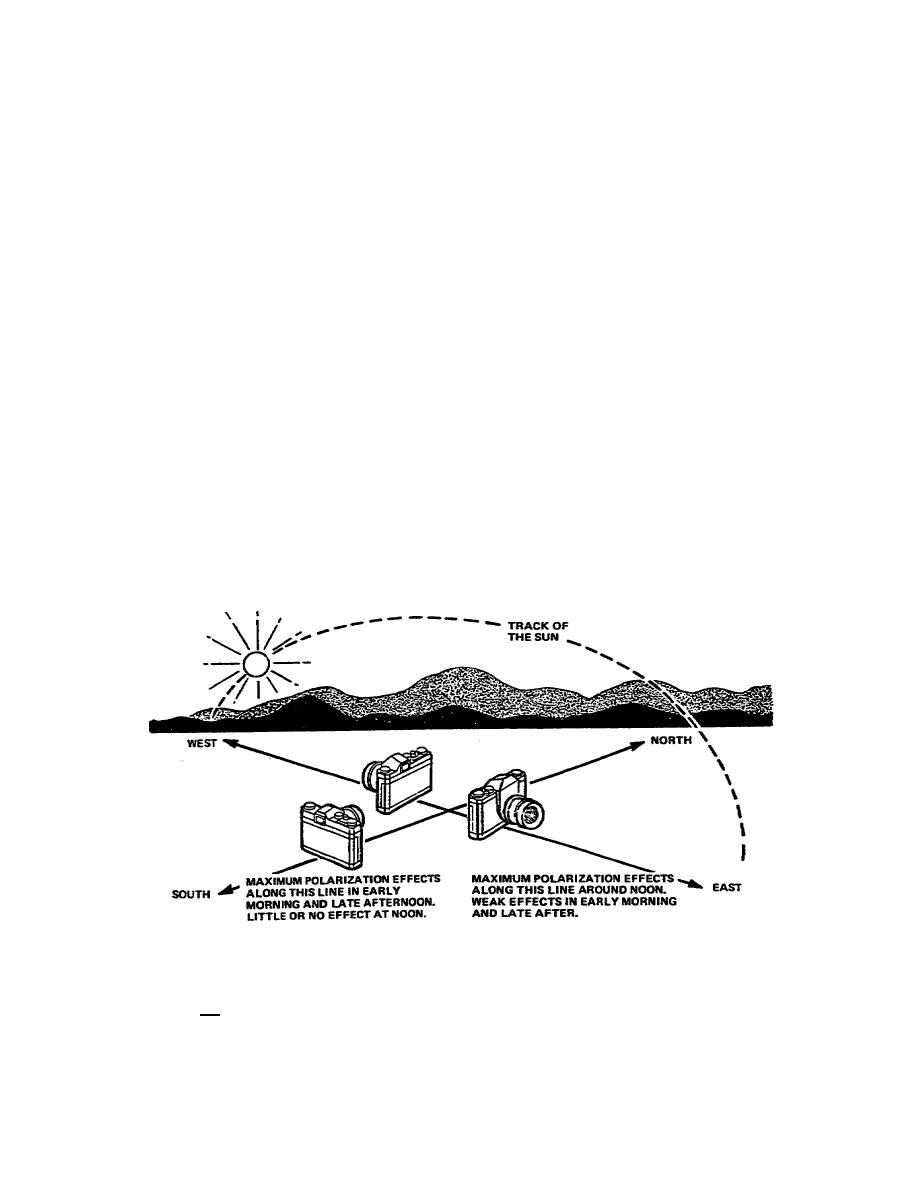
sidelighted or toplighted and you will have to open a stop as you have
already learned. You should also allow an additional 1/2 stop for subjects
that show reflections, because reflections often make subjects look brighter
than they are.
d. The polarizing filter can also darken blue skies.
This is
especially useful in color photography because it is the only way to darken
blue skies without changing the other colors in the scene. But it is also
useful in black and white photography, especially if the polarizer is used
in conjunction with a yellow filter.
Combining a yellow and polarizing
filter will allow correction of the rendition of all the other colors in the
scene and also permit a darkened blue sky.
Using a red filter can also
darken blue skies, as we said, but it will also darken greens considerably,
possibly rendering foliage nearly as dark as the sky. The yellow-polarizer
combination allows you to darken blue sky dramatically and still retain
detail in foliage or other intensely green objects. An added bonus is that
reds won't be unnaturally lightened either.
You'll get the maximum
darkening effect when you're taking pictures at right angles to the sun and
the handle of the polarizing screen (if it has one) is pointing at the sun
(fig 2-10). You can obtain various effects from light to dark by rotating
the polarizing screen.
After you decide which position of the screen
produces the effect you want, be sure to keep the screen in that position
when you put it over the camera lens. For example, if the handle was in the
3 o'clock position, make sure it's in the same position when the screen is
on the camera.
If you have a single-lens reflex camera, you can see the
effects of the polarizing screen by looking through the viewfinder while you
rotate the screen.
Figure 2-10.
Polarizing screen
You'll get the maximum darkening effect in the sky when you're taking
pictures at right angles to the sun, and the handle of the polarizing screen
is pointing at the sun.
44


 Previous Page
Previous Page
